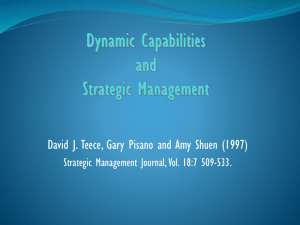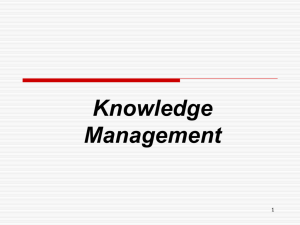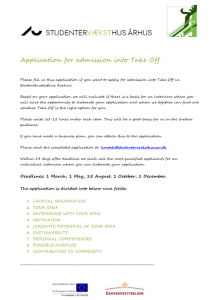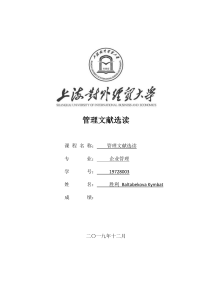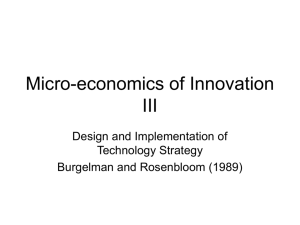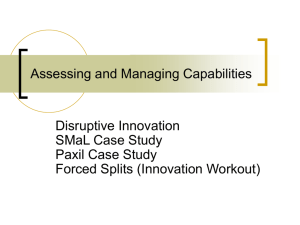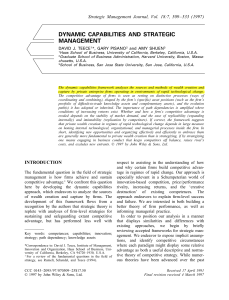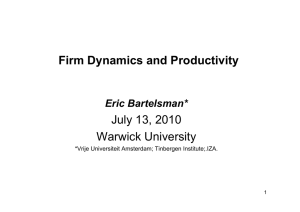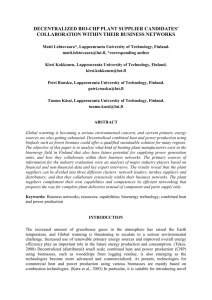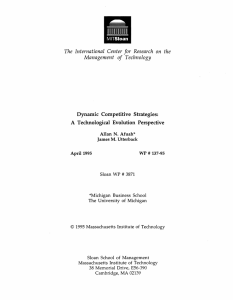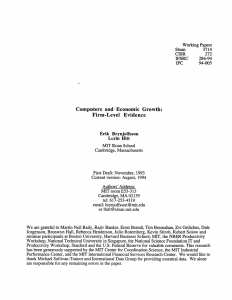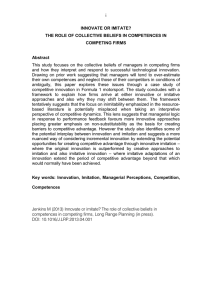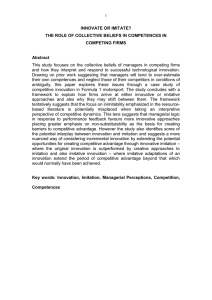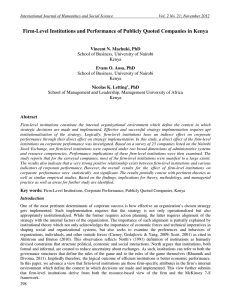Dynamic Capabilities and Strategic Management
advertisement
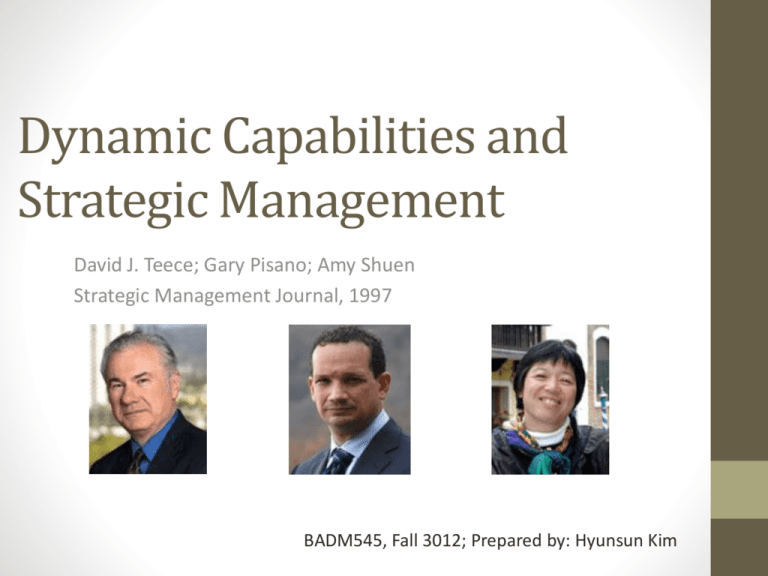
Dynamic Capabilities and Strategic Management David J. Teece; Gary Pisano; Amy Shuen Strategic Management Journal, 1997 BADM545, Fall 3012; Prepared by: Hyunsun Kim Motivation • Fundamental Question in Strategy • How do firms achieve and sustain competitive advantage? • Sources of wealth creation and capture by firms • Environmental Conditions • Schumpeterian world of innovation-based competition, price/performance rivalry, increasing returns, and the ‘creative destruction’ of existing competences • Research Question • How and why certain firms build competitive advantage in regimes of rapid change? Theoretical Background Approaches on the Sources of Competitive Advantages • Market Position Advantages • Competitive forces approach (Porter, 1980) • Emphasis on industry structure; five industry level forces • Strategic conflict approach (e.g., Shapiro, 1989) • Game theoretic model, analyzing competitive interaction between rival firms, and market environment; strategic moves • Firm-level Efficiency Advantages • Resource-based perspective(Penrose, 1959) • emphasizes firm-specific resources leading to lower costs or higher quality products • Dynamic capabilities Dynamic Capabilities Approach • An efficiency-based approach • firm-specific capabilities that can be sources of advantage, and to explain how combinations of competences and resources can be developed, deployed, and protected. • Elements • management capabilities, and • difficult- to-imitate combinations of organizational, functional and technological skills, • New dimensions to strategic research • the management of R&D; product and process development; technology transfer; intellectual property; manufacturing; human resources; and organizational learning. Dynamic Capabilities • Definition: the firm’s ability to integrate, build, and reconfigure internal and external competences to address rapidly changing environments • Emphasis: an organization’s ability to achieve new and innovative forms of competitive advantage • Why Firm-Level Capabilities? • Capabilities/competence cannot be readily assembled through markets • many distinctive elements of internal organization cannot be replicated in the market, or just through formal contracts Processes, Positions, Paths • Processes: the way things are done in the firm (i.e., routines*, patterns of current practice and learning) • Position: current specific endowments of technology, intellectual property, complementary assets, customer base, and its external relations with suppliers and complementors • Paths: the strategic alternatives available to the firm, path dependencies *routines: patterns of interactions that represent successful solutions to particular problems Processes Organizational and Managerial Processes • Coordination/integration: static • Rationality or coherence to processes and systems • => requirements from radical or architectural innovation might mismatch with the incumbents’ existing organizational processes • Learning: dynamic • Social and collective processes • => potentials for inter-organizational learning, through collaborations and partnerships • Reconfiguration: transformational • Change is costly for organizations • => ability to scan the environment and flexibility becomes important (e.g., decentralization; local autonomy) Positions = specific assets • Technological assets: know-how. Might be protected. • Complementary assets: i.e., prior commercialization activities • Financial assets: the firm’s cash position • Reputational assets: an intangible asset in the market • Structural assets: degree of hierarchy, governance • Institutional assets: regulatory systems and public policies • Market (structural) assets: product market position • Organizational boundaries: degree of integration Paths • Path dependencies • “history” (the firm’s investments and repertoire of routines) matters • May “lock-in” on inferior technologies • Technological opportunities • Prior R&D activity confines the feasible opportunities for the firm • Managerial perceptions are conditioned by the firm’s past experiences Replicability and Imitability • Replication • transferring or redeploying competences • Enables market expansions (geographical and product) • Foundations for learning and improvement • Imitation • replication performed by a competitor • Possible barrier: intellectual property rights Paradigms of Strategy
